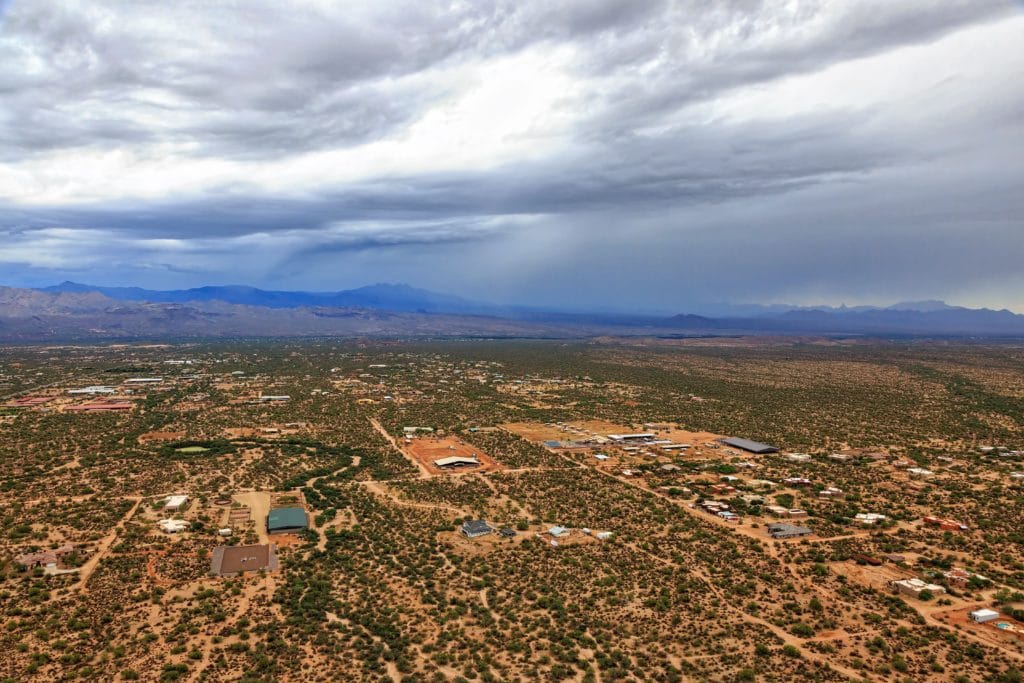The Monsoon season brings a shift in wind patterns that, combined with other factors such as low pressure, torrential rain, high winds, and thunderstorms, can lead to damages to your property.
From mid-June until the end of September, your property is at risk. But how can you prevent paying out-of-pocket expenses caused by water and wind damage?
In this article, you will find out what precautionary measures you can take and how you can protect yourself from unexpected expenses.
Take precautions against flooding
The monsoon season often brings heavy rainfall, which sometimes leads to an inch or more of water. Just a month ago, several roads and freeways in Phoenix were closed due to flooding, and two teens were struck by lighting.
Before you take any steps, you should find out whether your home is located in an area with a high risk of flooding. While flooding can occur even if your property is outside the high-risk area, it’s important to be aware of how much effort you should put into protecting your belongings.
This sort of information can also help you figure out if you need floor or water damage coverage, a standard homeowner’s insurance doesn’t include it.
As for changes you can make around the home, make sure your drainage isn’t clogged. Also, rain gutters and downspouts can help you redirect the water away from your home’s foundation.
Protect your property against fallen trees
High winds come with the risk of fallen trees, which can hit not only your car but also your home. To prepare yourself, you need to stake down the young trees that might not make it through strong winds and trim the big branches on bigger trees.
Also, make sure you clean your garage. Parking your car outside puts it at risk of being hit by big trees.
But since you can’t control how strong winds will be, if trees are uprooted, your property will suffer damages regardless. Your insurance should cover some of the damages as well as the removal of damaged trees.
However, you may need to look into your options when it comes to paying to replace the damaged trees, as this isn’t covered by a standard home insurance policy.
Buy a disaster kit supply and prepare for power outages
Roads can get closed. Not to mention, the water might get infested and mosquitoes may reproduce at a high rate during the monsoon season. Power outages are also a common problem.
You’ll need enough canned, non-perishable food items to last you for at least 3 days. You’ll also need to stock up on enough clean bottled water, comfortable clothing, and a lantern. Radios are a must too, as they help you get weather updates.
When a power outage occurs, some homes might become unlivable due to the rising temperatures and high humidity. As a consequence, many families might be forced to pay for a hotel. Some standard insurance policies will cover hotel expenses, so make sure you review the policy carefully before you purchase it.
A lot of food might go bad due to power outages, but many homeowner policies cover spoiled food up to $500.
Avoid out-of-pocket expenses by examining your insurance
Standard home Insurance policies usually cover the bare minimum. But if you live in a high-risk area, it’s important to plan for damages caused by flooding and strong winds.
Just this year, a mobile home was taken by the wind and landed on top of a car. Needless to say, the owner will have to pay quite a bit for the damages caused by the strong winds.
Because unfortunate events like this can happen at any time, you need to be protected against natural disasters. Make sure your insurance has you covered in case of flooding, high winds, or fallen trees.
Wrapping up
Natural disasters can lead to unexpected expenses and most standard home insurance don’t cover the bulk of them. As a result, you should consult with an insurance agent about what tweaks can be made to your insurance policy to make sure you’ll be protected against out-of-pocket expenses.
If you aren’t sure what kind of coverage you need or how much it costs, why not request a free quote? We have access to over 30 carriers, so you’ll have plenty to choose from when it comes to pricing and coverage.

